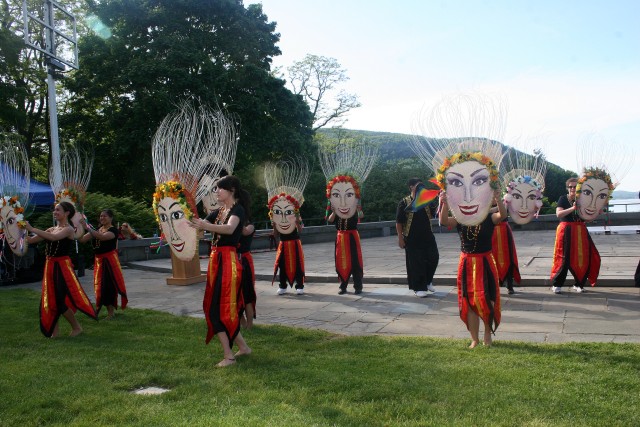WEST POINT, N.Y. (May 13, 2010) -- Trophy Point is always a place for special events such as
the annual tattoo or the summer musical series.
However, Trophy Point had a distinct Asian flair May 7 when it was turned over to Chinese, Korean and the Filipino members of cadet Asian-Pacific groups and their guests to showcase their food, cultural dances and demonstrations of martial arts for the 9th annual Asian-Pacific American Heritage Month Celebration.
This event is sponsored by the West Point Equal Opportunity Office and the Simon Center for Professional Military Ethic department. Participants enjoyed Asian food samplings such as Korean
Kimbap, a fast Korean food made from steamed white rice and other ingredients rolled in seaweed that looks like sushi. The audience also enjoyed the dances of various cultures such as the Hula from Hawaii performed by the Cadet Hula Club; Filipino dancing by the Alay Philippine Cultural Dance Group from Danbury, Conn.; demonstration of Kendo or "the way of the sword" and judo performed by members of the Cadet Martial Arts Club.
"This is the fifth event I've been to," Tony Guarco of the Department of Public Works said. "My mom is a Philippine native and instinctively always asks for the ingredients when she tastes food. (Then again) when mom went to her daughter's home, she made corn beef and cabbage and her daughter's boyfriend made Asian food."
Col. Bryan Goda, head of the Asian-Pacific Awareness Club, credited the cadets who organized the event. Cadets perform, organize and plan the event every year.
"I expect there will be at least 400 people here," he said as he eyed the line of people waiting to sample the food.
May was chosen to celebrate Asian and Pacific American heritages because it was in May 7, 1843 when the first Japanese immigrated to America and celebrated the completion of the transcontinental railroad. The majority of the workers on the railroad were
Chinese.


Social Sharing